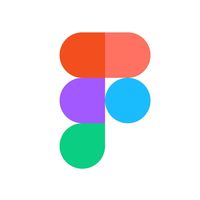The Essential Toolkit for Aspiring Web Designers
August 13, 2024, 4:07 am

Location: United States, California, San Francisco
Employees: 201-500
Founded date: 2012
Total raised: $329M
In the digital age, web design is more than just aesthetics. It’s a blend of art and science, where creativity meets functionality. For those stepping into this vibrant field, understanding the essential skills and tools is crucial. Let’s break down the key components that make a successful web designer.
**Hard Skills: The Foundation of Design**
Hard skills are the technical abilities that form the backbone of web design. Think of them as the bricks and mortar of a house. Without a solid foundation, the structure will crumble.
1. **Design Principles and Composition**: Every design starts with a blueprint. Knowledge of composition is vital. It’s about balance, symmetry, and proportion. A well-composed layout guides the viewer’s eye and creates harmony. Understanding the rule of thirds can transform a mundane design into a captivating one.
2. **Color Theory**: Colors evoke emotions. They can make or break a design. A web designer must grasp color schemes, contrast, and harmony. The right palette can set the mood and enhance user experience.
3. **Typography**: Words matter. The choice of font can influence readability and aesthetics. A designer should know how to pair fonts, adjust spacing, and create a visual rhythm. Typography is the voice of the design.
4. **UX/UI Design**: User experience (UX) and user interface (UI) are two sides of the same coin. UX focuses on the journey a user takes, while UI is about the look and feel of the interface. A designer must create intuitive paths for users, ensuring they find what they need effortlessly.
5. **Responsive Design**: In a world of diverse devices, adaptability is key. Responsive design ensures that websites function seamlessly across screens, from desktops to smartphones. It’s like tailoring a suit to fit any body type.
6. **Proficiency in Design Tools**: Familiarity with tools like Figma, Adobe XD, and Sketch is essential. These platforms allow designers to create, collaborate, and iterate in real-time. They are the artist’s palette, enabling creativity to flow.
**Soft Skills: The Human Element**
While hard skills are crucial, soft skills are the glue that holds everything together. They are the interpersonal abilities that enhance collaboration and communication.
1. **Communication**: A designer must articulate ideas clearly. Whether discussing a project with a client or collaborating with developers, effective communication is vital. It’s about translating complex concepts into understandable terms.
2. **Teamwork**: Design is rarely a solo endeavor. Working in teams requires flexibility and cooperation. A successful designer knows how to listen, compromise, and contribute to a positive team dynamic.
3. **Adaptability**: The design landscape is ever-changing. New trends and technologies emerge constantly. A designer must be willing to learn and adapt, embracing change rather than resisting it.
4. **Time Management**: Deadlines are a reality in the design world. A designer must prioritize tasks and manage time effectively. It’s about balancing multiple projects without sacrificing quality.
5. **Critical Thinking**: Design is problem-solving. A designer must analyze challenges and devise creative solutions. This skill helps in refining designs and enhancing user experience.
6. **Creativity**: At its core, design is about innovation. A designer must think outside the box, generating unique ideas that captivate users. Creativity can be nurtured through practice and exposure to diverse influences.
**The Tools of the Trade**
Now that we’ve covered the skills, let’s explore the tools that can help bring designs to life.
1. **Figma**: This cloud-based design tool is a favorite among UX/UI designers. It allows for real-time collaboration, making it easy to work with teams. Its versatility makes it suitable for both UI elements and complete designs.
2. **Adobe Photoshop**: The industry standard for raster graphics, Photoshop is indispensable for creating detailed images and graphics. Its extensive features allow for intricate designs, making it a go-to for many designers.
3. **Adobe Illustrator**: For vector graphics, Illustrator reigns supreme. It’s perfect for creating logos, icons, and illustrations. The scalability of vector graphics ensures designs remain sharp at any size.
4. **Sketch**: This vector-based design tool is tailored for web and mobile interfaces. Its user-friendly interface and powerful features make it a favorite among designers focused on UI.
5. **Webflow**: For those who want to build websites without coding, Webflow is a game-changer. It combines design and development, allowing designers to create responsive websites visually.
6. **Aseprite**: For pixel art enthusiasts, Aseprite is a dedicated tool for creating pixel graphics and animations. It’s perfect for game designers looking to create retro-style art.
7. **PureRef**: This handy tool helps designers organize references. It allows users to compile images and notes in one place, streamlining the creative process.
**Continuous Learning: The Path to Mastery**
The design world is dynamic. Trends shift, and new technologies emerge. Continuous learning is essential. Designers should engage in workshops, online courses, and design communities. Staying updated ensures relevance in a competitive field.
**Conclusion: The Journey Ahead**
Becoming a successful web designer is a journey. It requires a blend of hard and soft skills, along with the right tools. Embrace the learning process. Experiment, create, and refine your craft. The digital landscape is vast, and your unique perspective can shape its future. Dive in, and let your creativity shine.
**Hard Skills: The Foundation of Design**
Hard skills are the technical abilities that form the backbone of web design. Think of them as the bricks and mortar of a house. Without a solid foundation, the structure will crumble.
1. **Design Principles and Composition**: Every design starts with a blueprint. Knowledge of composition is vital. It’s about balance, symmetry, and proportion. A well-composed layout guides the viewer’s eye and creates harmony. Understanding the rule of thirds can transform a mundane design into a captivating one.
2. **Color Theory**: Colors evoke emotions. They can make or break a design. A web designer must grasp color schemes, contrast, and harmony. The right palette can set the mood and enhance user experience.
3. **Typography**: Words matter. The choice of font can influence readability and aesthetics. A designer should know how to pair fonts, adjust spacing, and create a visual rhythm. Typography is the voice of the design.
4. **UX/UI Design**: User experience (UX) and user interface (UI) are two sides of the same coin. UX focuses on the journey a user takes, while UI is about the look and feel of the interface. A designer must create intuitive paths for users, ensuring they find what they need effortlessly.
5. **Responsive Design**: In a world of diverse devices, adaptability is key. Responsive design ensures that websites function seamlessly across screens, from desktops to smartphones. It’s like tailoring a suit to fit any body type.
6. **Proficiency in Design Tools**: Familiarity with tools like Figma, Adobe XD, and Sketch is essential. These platforms allow designers to create, collaborate, and iterate in real-time. They are the artist’s palette, enabling creativity to flow.
**Soft Skills: The Human Element**
While hard skills are crucial, soft skills are the glue that holds everything together. They are the interpersonal abilities that enhance collaboration and communication.
1. **Communication**: A designer must articulate ideas clearly. Whether discussing a project with a client or collaborating with developers, effective communication is vital. It’s about translating complex concepts into understandable terms.
2. **Teamwork**: Design is rarely a solo endeavor. Working in teams requires flexibility and cooperation. A successful designer knows how to listen, compromise, and contribute to a positive team dynamic.
3. **Adaptability**: The design landscape is ever-changing. New trends and technologies emerge constantly. A designer must be willing to learn and adapt, embracing change rather than resisting it.
4. **Time Management**: Deadlines are a reality in the design world. A designer must prioritize tasks and manage time effectively. It’s about balancing multiple projects without sacrificing quality.
5. **Critical Thinking**: Design is problem-solving. A designer must analyze challenges and devise creative solutions. This skill helps in refining designs and enhancing user experience.
6. **Creativity**: At its core, design is about innovation. A designer must think outside the box, generating unique ideas that captivate users. Creativity can be nurtured through practice and exposure to diverse influences.
**The Tools of the Trade**
Now that we’ve covered the skills, let’s explore the tools that can help bring designs to life.
1. **Figma**: This cloud-based design tool is a favorite among UX/UI designers. It allows for real-time collaboration, making it easy to work with teams. Its versatility makes it suitable for both UI elements and complete designs.
2. **Adobe Photoshop**: The industry standard for raster graphics, Photoshop is indispensable for creating detailed images and graphics. Its extensive features allow for intricate designs, making it a go-to for many designers.
3. **Adobe Illustrator**: For vector graphics, Illustrator reigns supreme. It’s perfect for creating logos, icons, and illustrations. The scalability of vector graphics ensures designs remain sharp at any size.
4. **Sketch**: This vector-based design tool is tailored for web and mobile interfaces. Its user-friendly interface and powerful features make it a favorite among designers focused on UI.
5. **Webflow**: For those who want to build websites without coding, Webflow is a game-changer. It combines design and development, allowing designers to create responsive websites visually.
6. **Aseprite**: For pixel art enthusiasts, Aseprite is a dedicated tool for creating pixel graphics and animations. It’s perfect for game designers looking to create retro-style art.
7. **PureRef**: This handy tool helps designers organize references. It allows users to compile images and notes in one place, streamlining the creative process.
**Continuous Learning: The Path to Mastery**
The design world is dynamic. Trends shift, and new technologies emerge. Continuous learning is essential. Designers should engage in workshops, online courses, and design communities. Staying updated ensures relevance in a competitive field.
**Conclusion: The Journey Ahead**
Becoming a successful web designer is a journey. It requires a blend of hard and soft skills, along with the right tools. Embrace the learning process. Experiment, create, and refine your craft. The digital landscape is vast, and your unique perspective can shape its future. Dive in, and let your creativity shine.
